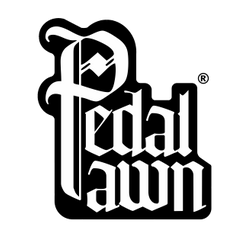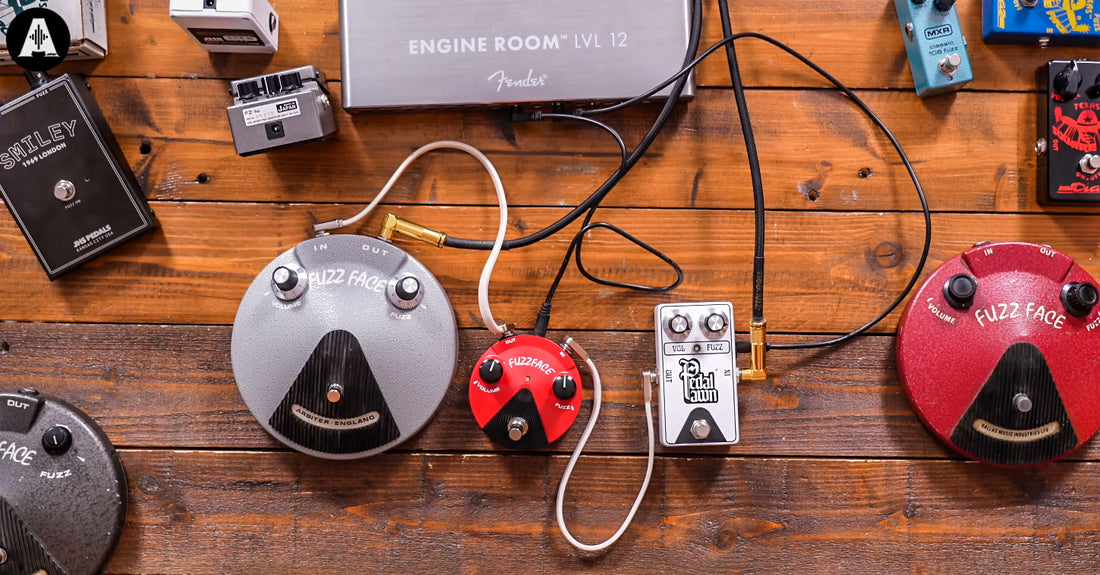As a guitarist, you know that the order of effects pedals in your signal chain can have a big impact on the overall sound of your guitar. While there's no one-size-fits-all approach to ordering your pedals, there are some general guidelines that can help you achieve the tone you're looking for. In this post, we'll discuss the best way to order your guitar pedal signal chain, including where to place fuzz and treble boosters.
Understanding Pedal Roles
First, it's important to understand the basic types of pedals and their functions. The most common types of pedals are:
-
Dynamics pedals: These include compressors, limiters, and volume pedals, and they help to control the dynamics of your guitar's signal.
-
Filter pedals: These include wah-wah pedals and envelope filters, and they can shape the frequency content of your guitar's signal.
-
Fuzz and distortion pedals: These include overdrive, distortion, and fuzz pedals, and they can add grit and distortion to your guitar's signal.
-
Treble boosters: These boost the treble frequencies of your guitar's signal, adding clarity and cutting through the mix.
-
Modulation pedals: These include chorus, flanger, and phaser pedals, and they can create movement and depth in your guitar's signal.
-
Time-based effects: These include delay and reverb pedals, and they can add depth and ambience to your guitar's signal.
With that in mind, here's a recommended order for your guitar pedal signal chain:
-
Fuzz and treble boosters: If you're using a fuzz or treble booster pedal, you'll want to place it first in your signal chain. These pedals interact with your guitar's pickups and can help shape your tone before it even hits your other pedals.
-
Dynamics pedals: These should come next. Compressors and limiters help to even out your guitar's volume, while volume pedals can be used to control your overall volume level.
-
Filter pedals: These should come next. Wah-wah pedals and envelope filters can shape your guitar's frequency content and create interesting tonal variations.
-
Distortion pedals: These should come after your dynamics and filter pedals. Overdrive pedals produce a smooth, bluesy distortion, while distortion pedals produce a harder-edged sound.
-
Modulation pedals: These should come next. Chorus, flanger, and phaser pedals create movement and depth in your guitar's signal. They work best after overdrive and distortion pedals, as they can be affected by the gain in those pedals.
-
Time-based effects: These should be last in your signal chain. Delay and reverb pedals add depth and ambience to your guitar's signal, and they work best when placed after all other effects.
Uni-Vibe Style Pedals:
Now, let's talk about Uni-Vibe pedals. These produce a unique swirling, vibrato-like effect that can add depth and texture to your guitar's signal. There are a couple of ways to incorporate them into your signal chain:
-
Before fuzz/overdrive: If you want that big, fat, watery sound that's reminiscent of Robin Trower, you can place your vibe pedal before your fuzz or overdrive pedal. This will create a thick, saturated sound that's perfect for solos and leads.
-
After fuzz/overdrive: If you want a more classic rock sound that's reminiscent of Jimi Hendrix at Woodstock, you can place your vibe pedal after your fuzz or overdrive pedal. This will create a more swooshing, swirling effect that adds depth and texture to your distorted sound.
Overview
Of course, this is just a starting point, and there are no hard and fast rules when it comes to pedal order. Experimentation is key, and you may find that certain combinations of pedals sound better in a different order. As a general rule, however, following the signal chain outlined above will help you achieve a clear, balanced, and well-defined tone that allows each effect to work to its fullest potential.

